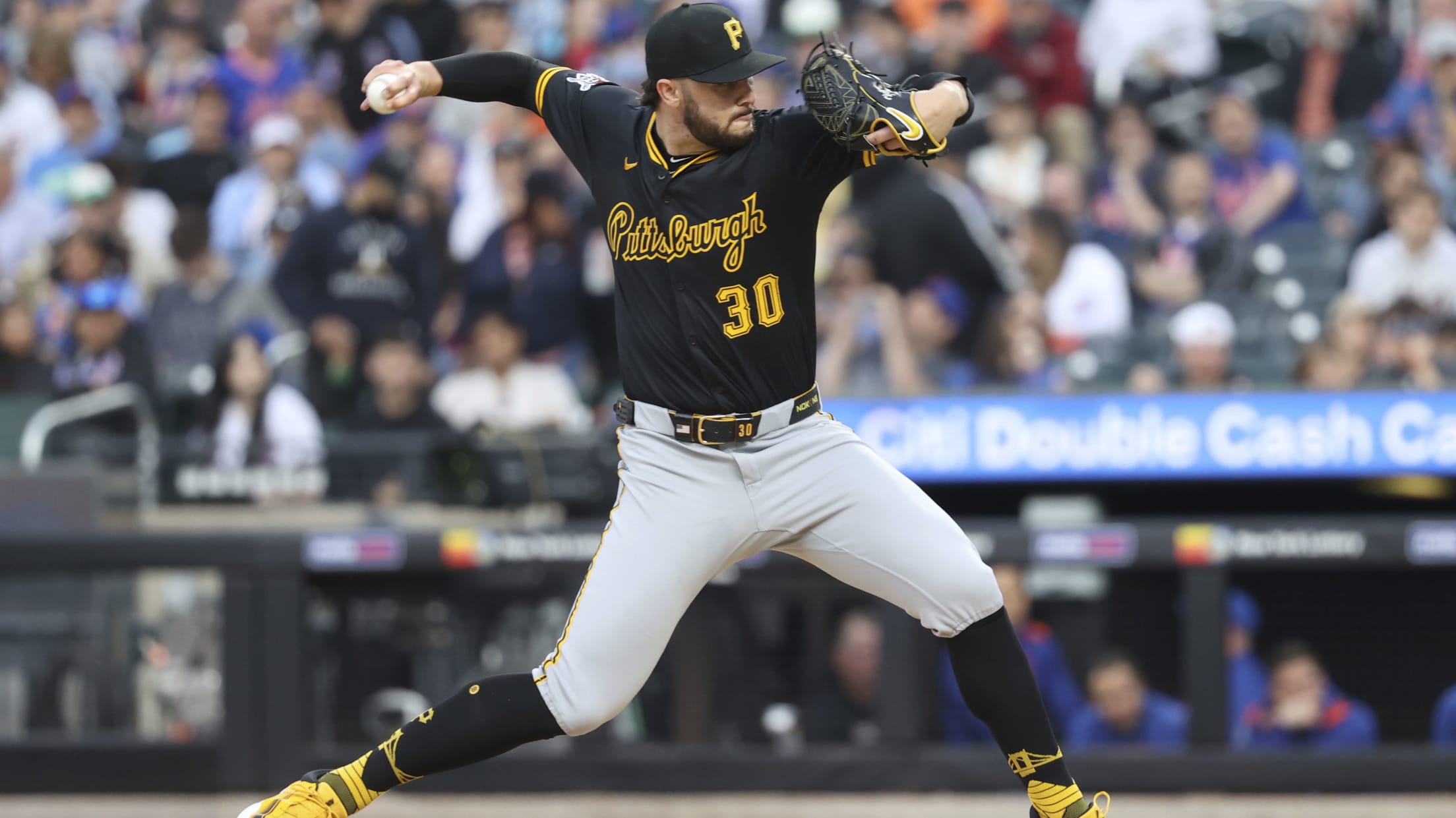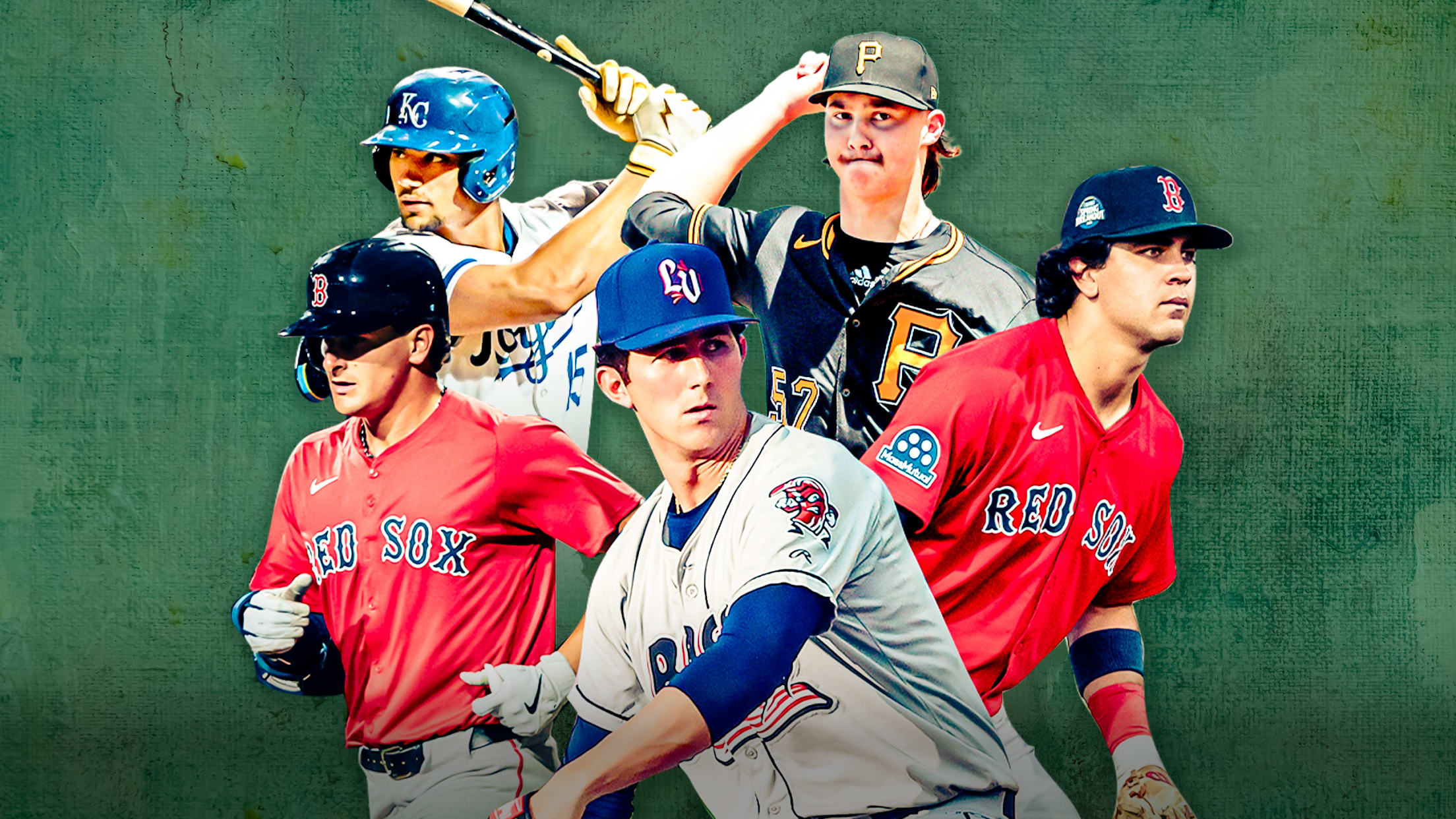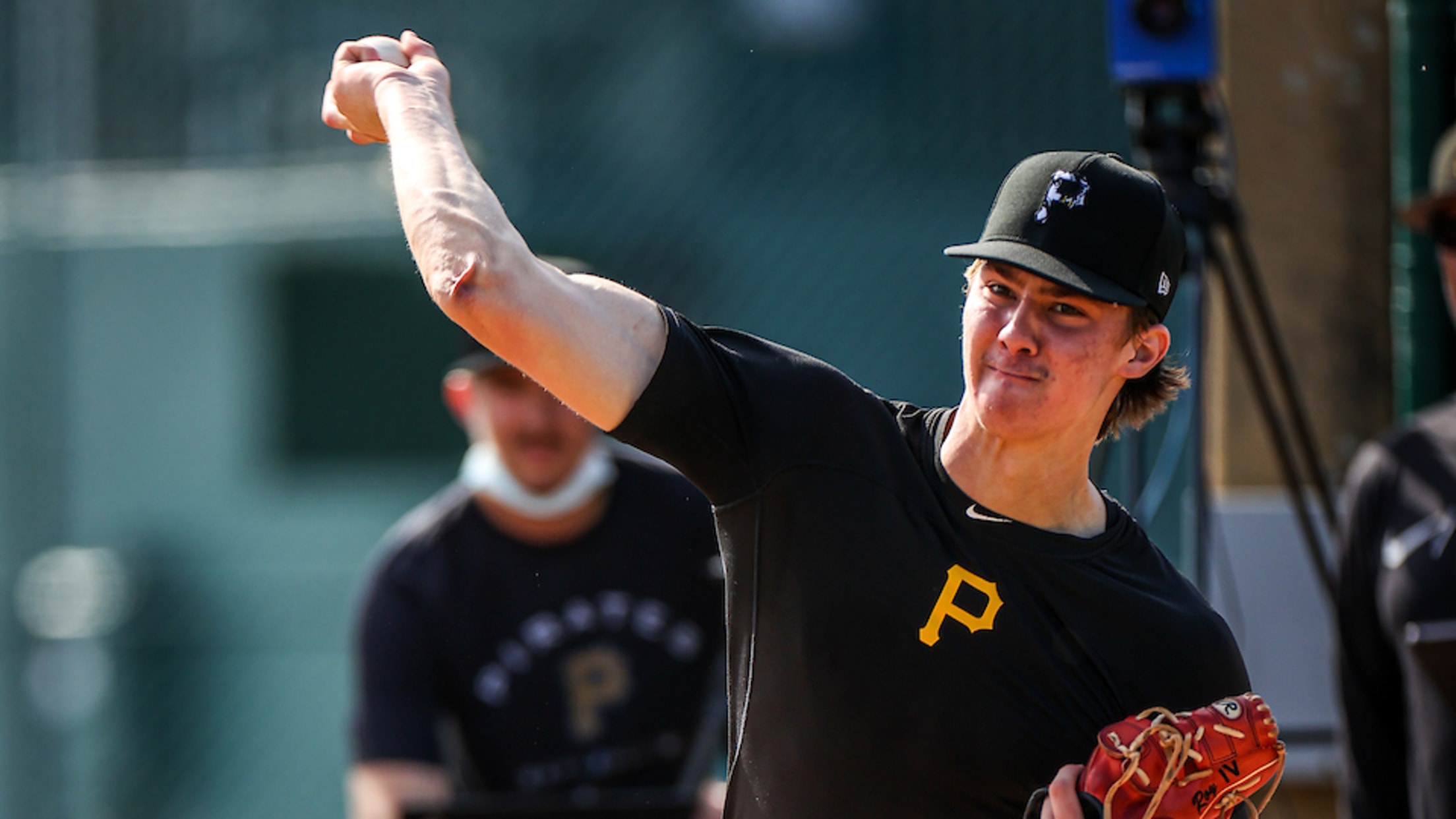
Bubba on cusp of big leagues after nearly starting 'my football life'

Earlier that day, Chandler had received a text from Pirates scout Cam Murphy asking if he was ready to be a Pirate. Chandler thought that meant he could go first overall. He didn’t. He didn’t go second, fifth or 10th either. It was around then that he knew there wasn’t going to be a jubilant celebration with all his friends and loved ones that night.
He just didn’t know how to break the news to everyone else.
“I didn’t want to get up in front of everyone and be like, ‘Hey, by the way, I didn’t get drafted. I know there’s 18 more picks left, but you all can leave,’” Chandler recently recalled while sitting in the visitors’ dugout of Fifth Third Field in Toledo, Ohio.
Jay Lasley, Chandler’s baseball coach at North Oconee High School in Bogart, Ga., could see it. He had tried to help leading up to the Draft, telling a scout of the nearby Atlanta Braves: “Look man, I’ve got the next Chipper Jones and John Smoltz rolled into one.”
Look man, I’ve got the next Chipper Jones and John Smoltz rolled into one.
Jay Lasley, Chander's high school coach
Hyperbole? Sure. But scouts were torn on whether Chandler would be the next great pitcher out of the program (following Kumar Rocker) or if he was destined to be the next slick-fielding, switch-hitting shortstop. One scout had told Lasley leading up to the Draft that Chandler was the most talked about prospect in this year’s class.
Still, nobody called on night one of the Draft.
“To sit there and see names come off the board and see people get drafted and to watch him not get selected, it’s tough,” Lasley said. “You hurt for the kid. Not like, ‘Oh, he didn’t get a chance.’ But you hurt for him as a person.”
The party wrapped. Chandler’s prediction was right. Every team passed on him. All there was left to do was to clean up.
“My mom set up a lot of it,” Chandler said. “She wasn’t going to be the one cleaning it up.”
Today, Bubba Chandler is a stud, the top pitching prospect in the game according to MLB Pipeline. He can crack a joke as easily as he can snap a devastating slider. And he’s as smooth mechanically as he is in conversation, especially when it’s about golf, college football or fishing.
His sisters gave Roy Ruben Chandler the “Bubba” moniker when he was a baby, and it fits like a glove. He’s as athletic as any player who has come through the Pirates’ system, someone who seemingly could have been a big league switch-hitter, a switch-pitcher or a first-round pick as an NFL quarterback had the butterfly’s wings flapped a different way years ago.
On July 11, 2021, though, he was wounded. He helped clean up the party, turned off his phone and then left to clear his head. He also made up his mind. The pro ball dream was dead. He would instead go to Clemson University, where he was set to be the Tigers’ quarterback.
“I was just going to drive back to campus the next day,” Chandler said, “and start my football life.”
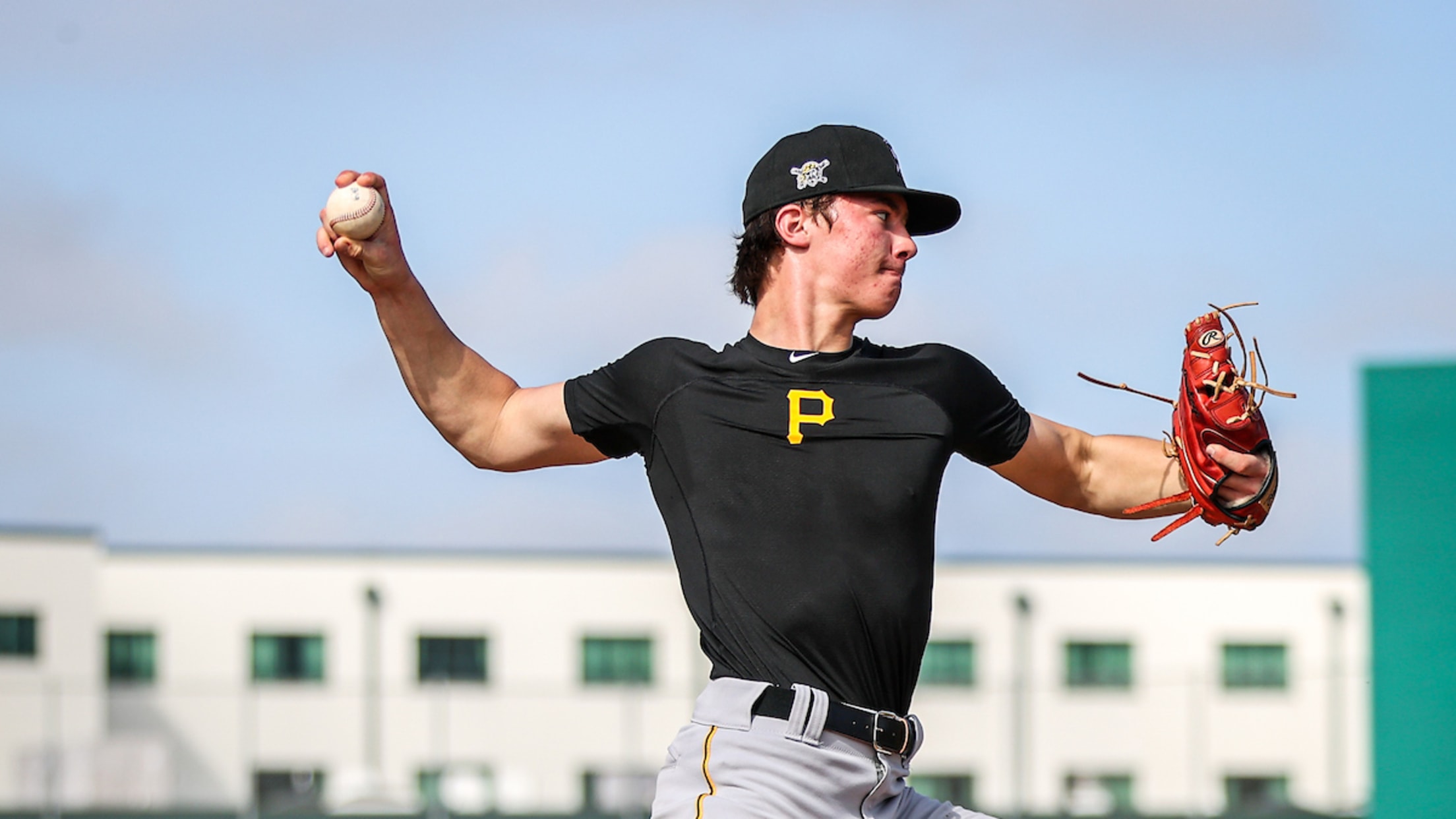
If you want Bubba to do something, tell him he can’t. If you want Bubba to compete harder, start keeping score.
Lasley on Chandler's competitiveness
Early in their time together at North Oconee High School, Lasley figured out the code for getting the most out of Chandler.
“If you want Bubba to do something, tell him he can’t,” Lasley explained. “If you want Bubba to compete harder, start keeping score.”
Growing up, the Chandlers would have family basketball games where Bubba, the baby of the family, would team up with his dad, Ruben. His sisters, Jordan and Cody, and his mom, Bobbi, would normally win. It was a family of athletes, and Chandler’s older sisters set the pace by being stars in track, basketball and softball.
“I respond pretty well to challenges,” Chandler said. “Competitive as hell.”
“This is a very hyperbolic comparison, he’s got that Michael Jordan in him,” Lasley added. “The stories you hear about him trying to beat you on the basketball court, trying to beat you on the here and there. His competitive nature and his confidence in his competitive nature is very high. But rightfully so. The kid is a phenomenal athlete.”
That competitive edge was obvious by the time Lasley started to coach Chandler his freshman year. Chandler had already made a name for himself on the gridiron and basketball court before baseball season began. Unbeknownst at the time, he most likely suffered an arm or elbow injury during one of his other sports because he broke his right arm throwing a curveball to Rocker (now with the Rangers) in an intersquad matchup. Chandler heard the pop, needed surgery and was given strict instructions not to throw.
Chandler quickly grew tired of being just a cheerleader during games, so he came up with another idea. Once he got out of the cast, he was going to learn first base. After some practice, his father sent a video to Lasley to show what Chandler can do at first base. Lasley appreciated the effort, but he said that Chandler can’t be throwing at all, not even as a first baseman.
Then Lasley watched the video. Chandler was playing first base as a lefty, and he ended up getting some playing time as a freshman.
Chandler isn’t just a switch-hitter, he’s an ambidextrous athlete who can throw a football 50 yards left-handed. (Chandler said he can throw it more than 50, but that’s a nice, round number). His sophomore year, Lasley promised Chandler that if he continued to put in the work, he would let him throw an inning left-handed his senior year. When it did happen, Chandler struck out the side. (Chandler claims it was an immaculate inning.) There wasn’t a radar gun that day, but the estimate was that his fastball sat 85-87 mph.
“My mom’s left-handed, so I’ve got the genes in me,” Chandler explained with a smirk.
Despite the raw talent, Chandler wasn’t a coveted prospect going into his senior year. The COVID-19 pandemic drastically shortened his junior campaign, and his commitments as the team’s starting quarterback meant that he couldn’t spend his summer and fall making a name for himself on the showcase circuit.
Lasley knew Chandler had the potential to go pro. He also knew he was going to need more mass to do it. As Chandler prepared for his senior year, Lasley told him he had a million reasons to gain 20 pounds. It didn’t register until Lasley flat-out said that if he put on 20 pounds, he could get a million dollar signing bonus.
Chandler took the challenge and consumed somewhere between 7,000-8,000 calories a day to put on weight. In addition to his normal three square meals, he would also typically have 10 peanut butter and jelly sandwiches, four protein shakes and six Big Macs or Whoppers. A couple of those fast food sandwiches would come during school hours, a perk of being a star athlete whose coaches teach a good chunk of your classes.
Chandler would send pictures of his feet on the scale to Lasley and his pitching coach, Tom Dimitroff, on his journey to 200 pounds. (Chandler said he gained closer to 40 pounds.) The extra weight helped, and his fastball went from 91-92 mph as a junior to sitting 95 mph as a senior. It touched as high as 98.
Yet, the only scouts taking notice were football ones. Football videos he made with friends had made the rounds during the lockdown portion of the pandemic, and Clemson made an offer for him to be their quarterback. To sweeten the pot, they were going to let him play baseball too.
“I don’t see any reason why Bubba Chandler couldn’t have been the starting quarterback at Clemson, one of the best pitchers on their team and one of the best hitters in their lineup,” Lasley said. “The average person can’t do that. I also don’t believe Bubba Chandler is an average person.”
Lasley decided to get some baseball videos circulating too. Though Chandler had already committed to Clemson, the baseball dream wasn’t dead. Those videos also spread quickly, and scouts started taking notice. Chandler also took ownership of the team, leading the squad on the field and convincing them to bleach their hair, with Chandler’s mullet taking the show.
“Roy Ruben Chandler has never lacked for confidence,” Lasley said. “It’s learning how to take that confidence in [himself] and harness it into work and harness it into the direction it needs to be.”
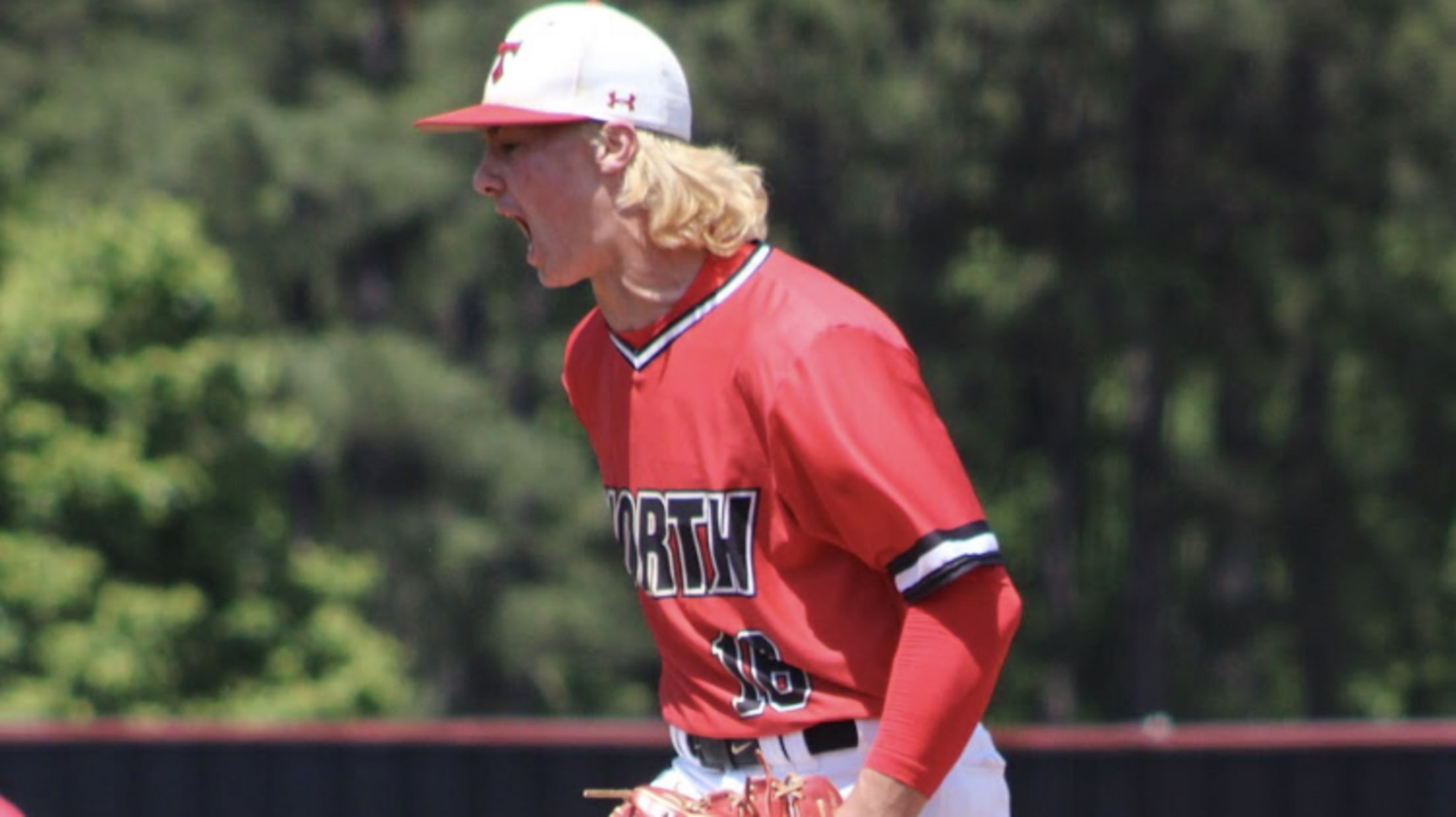
It’s July 12, 2021, the second day of the Draft. Lasley’s been getting calls all morning because Chandler isn’t picking up his phone.
That included outreach from Murphy, who was trying to follow through on that text he sent Chandler the day before. Is he ready to be a Pirate?
The 2021 Draft was unique for a variety of reasons, the most obvious being it was the first year after the COVID-19 pandemic shut down the collegiate and amateur ranks. There also wasn’t an obvious player at the top of the class. The Pirates took advantage of that, selecting Henry Davis first overall. He was the top player on their board, and he was willing to sign for significantly under slot. Teams can only spend so much money on a Draft class before they’re penalized future picks, and selecting Davis meant the Pirates could hedge their 1.1 bet and take several top high school players on day two, give them larger signing bonuses than expected and convince them to forgo college.
Chandler was on the Pirates’ list of prep players they wanted to steal in a later round. They just couldn’t get in touch. They also weren’t the only team trying to court him.
Eventually, Chandler started answering his phone again.
“My dream was always to play baseball,” Chandler explained.
He talked with his advisers, his family and Lasley about the opportunity in front of him. They agreed that the Pirates were probably the best fit because they were revamping their pitching development team. They were also offering him an opportunity to hit, too.
“I think when the Pirates came in with the opportunity to do both and put him in position to be a Shohei Ohtani, being part of a select group to pitch and hit, I think that perked his interest up again,” Lasley said.
It was going to be an experiment for both sides. The Pirates had tried to convert outfielder JB Shuck into a reliever in 2019, but he was already a Major League player by that point. They had never tried to develop a teenager into being a two-way player.
“[He’s a] premium athlete that if he was only a shortstop would’ve been drafted as a shortstop,” Pirates general manager Ben Cherington said. “A combination of that and his strong desire to give it [being a two-way player] a shot, a combination of both of those things, is why we did it. … We’re going to give this a shot, and part of giving it a legitimate shot with Bubba is you’re also gonna learn with us. We’re going to do this together.”
Chandler agreed and was selected in the third round. He signed for a bonus of $3 million, a sum that’s only been paid for a third-rounder three other times.
Chandler’s natural brown hair was starting to reemerge through his bleach job in his early days in Bradenton, Fla. His roots were showing, and the game was revealing that it was going to be tougher than what the self-made golden boy thought it would be to succeed as a two-way player.
“When I first got into pro ball, there were a lot of talented guys I got to watch in Bradenton, Jared [Jones] being one of them,” Chandler said. “I was just like, ‘Man, I think the Pirates made a mistake picking me. Good Lord, these are some extremely good baseball players.’”
The routines and challenges of pro ball caught Chandler off guard, especially on the offensive side. As a pitcher, an upper-90s fastball can help mask many problems when you’re facing first- and second-year players. Offensively, there wasn’t that safety net.
“It’s the worst thing ever,” Chandler joked about hitting. “It’s all in your head. You learn how mentally tough you can be.”
Being a two-way player created challenges in his workload. When he first landed in the Florida Coast League, Chandler would spend one day a week as a shortstop, two or three as a designated hitter and then have his normal start day and throw day. He and the team quickly realized how daunting that workload was and replaced a workout day with a recovery day of ice baths and stretching. By 2022, Chandler was done playing the infield and was strictly a pitcher and designated hitter because the throws made across the diamond were taxing his arm and potentially impacting his pitching development.
“We were just trying to balance him,” said Matt Ford, Chandler’s then-pitching coach in the FCL and now current pitching coach of the Double-A Altoona Curve. “Focus on pitching, but also get reps on the hitting side. I can’t speak for him, but he and I were like, ‘You’re pretty special on the mound, man.’ He’s got some elite stuff. I think he understood that at the end of the day.”
During the 2021 offseason, the Pirates held development camps for their prospects. One camp was for hitters, the other for pitchers. Chandler was the only player at both.
Between the camps, a reality started to set in: Hitting is harder than Chandler thought. It’s even harder in the swirling winds of a Florida gulf town.
“[Bradenton] is not the best place to hit,” Chandler said. “Some guys make it look easy. I was not one of those guys.”
Chandler struck out in 40% of his plate appearances in his brief cameo in the FCL in 2021. He started 2022 at the same level, not getting the bump to Single-A Bradenton until July. Other pitchers in that Draft class – like Anthony Solometo, another high schooler who got an over-slot signing bonus – got bumped up before him. It was easy to see that being a two-way player was causing him to advance slower than his peers.
When he did get the call to Single-A, he again struck out 40% of the time, this time with a .184 batting average. On the pitching side, his stuff was still impressive, but he wasn’t landing it in the zone enough. Signs were showing that this split focus might not be working.
At the end of 2022, Chandler had 57 games as a pro hitter under his belt. He had gone deep five times in 161 plate appearances – a fine enough pace that would put him somewhere between 15-20 over a full season – but with a .189 batting average and gobs of strikeouts.
It was time to ask if he was spending too much time on the dream rather than the reality.
“I think he knew he was going to pitch,” said Henry Davis, Chandler’s friend and first pro roommate. “Obviously he loves hitting, and you talk to any pitcher in here, they’re going to want to keep the bat in their hands as long as possible. But he knew pitching was the final destination.”
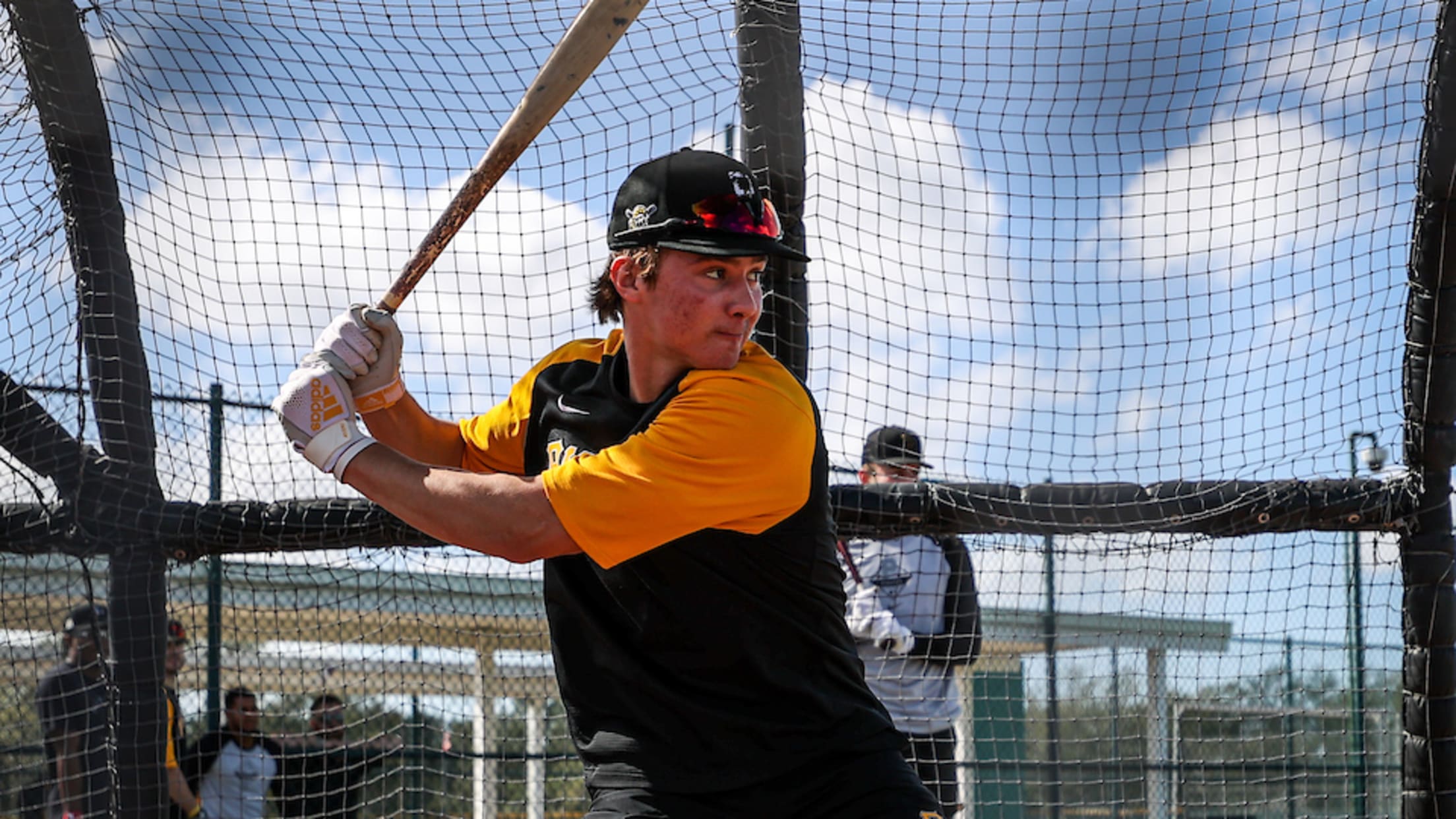
When Chandler arrived at Spring Training in 2023, the Pirates sat him down and told him they were putting his hitting development on pause. He was just going to pitch.
He had braced himself for that possibility, but didn’t expect the news so soon.
“I focused a lot more on hitting than I did pitching [that winter],” Chandler said. “I get there, first day of Spring Training, ‘Hey, you’re done.’ It caught me off guard.”
He was off to High-A Greensboro to start the year, but the promotion presented its own set of challenges. The Grasshoppers’ home of First National Bank Field is one of the most hitter friendly in the Carolinas. Not only was the bat being taken out of his hand, he was going to be pitching in a bandbox.
“I remember I thought, ‘OK, this is going to be interesting,’” Cherington said. “We’re committing to pitching for the first time ever, and we’re sending him to a very hitter-friendly ballpark. First time he’s done this. To some degree, I didn’t expect him to go dominate right away.”
Chandler definitely didn’t dominate. His ERA ballooned to 6.79 over the first half of the season, and the first foray as a pitcher only left him frustrated.
“He had that [hitting] to distract him between starts,” Davis said. “It wasn’t the only thing. Now if you’re a pitcher, if you have a bad start, you’re sitting on it for six days. You’ve got to live in it. If you give up six, seven runs, nothing is changing. You can’t do anything about it until your next time out.”
Chandler didn’t really have a roadmap to get back on track. A bullpen session is a chance for pitchers to focus on what they want to look like and usually last somewhere between 25-40 pitches, depending on a pitcher’s role and how much work they want to do. Chandler’s Greensboro manager, Robby Hammock, noticed that he would throw 10-pitch bullpens. And there were days he didn’t even want to do that.
“It was a tough go at the beginning for him, and rightfully so,” said Hammock, now a coach with the Padres. “No offense to either side, sometimes though, as a hitter, when you get asked to stop hitting, there’s a sense of failure on the hitting side that’s tough to deal with.”
Chandler found solace in those opening months by watching football videos. He was still eligible to play collegiately, and players like Chris Weinke had showed that you can leave baseball and still become a Heisman-winning quarterback. Clemson coach Dabo Swinney told Chandler there was still a spot waiting for him, and those with NIL money had continued to try to be the siren call to bring him back to the gridiron.
“Hell yeah I was considering it,” Chandler said. “I had a couple conversations with myself about going back. … This is not what I expected pro ball to be, and this is not very fun, and I knew I was going to have fun if I was playing quarterback for a top five university.”
Chandler was having conversations with a lot of people around that time. Davis was going through his own transition, moving from catcher to right field. Chandler is the same age as Davis’ younger brother, Morgan, and he wanted to help Chandler “maybe not make the same mistakes that I did” like an older sibling would. Lasley tried to comfort him by saying it was a “business decision” and that being just a pitcher should get him up to the Majors quicker.
The most impactful voice, though, was that of his dad, who had a simple message: “You’ve got all the talent in the world. Don’t waste it.”
“I needed to grow up a little bit on the field,” Chandler admitted. “[If you] just go out there and compete every pitch, nine times out of 10, you’re going to look up at that scoreboard and there’s going to be a lot of zeros. Everything is going to take care of itself. Just go out there and compete, and I did that.”
You’ve got all the talent in the world. Don’t waste it.
Chandler's dad
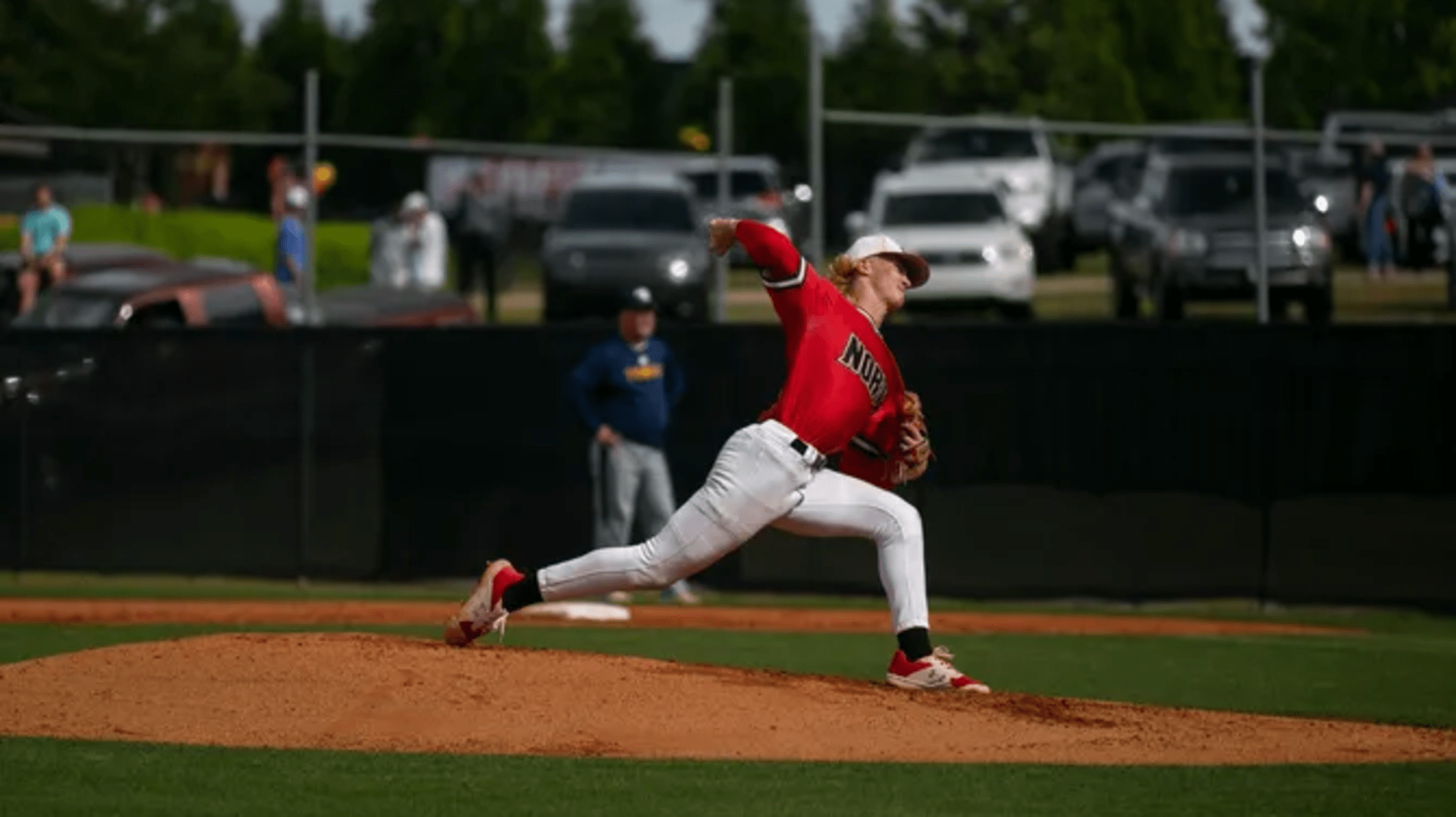
It’s July 12, 2023. It’s the first day of the High-A All-Star break. It’s two years to the day from when Chandler was drafted.
It’s time for some reflection.
The midseason break was much-needed. He golfed with his dad at Bryan Park and shot a 77. He caught an 8.4 pound bass. He spent time with his girlfriend.
And he decided it was time to give this pro baseball thing a proper go.
“I was like, you know, God put me here,” Chandler said. “Let’s use the abilities I’ve got. After that, it started trending uphill.”
First was figuring out a between-starts routine. Those bullpens had to be more focused.
“He was a very intuitive, very observant guy,” Hammock said. “He’d see how other guys took care of their business. He had conversations. Conversations with myself, pitching coach [Fernando Nieve]. Took a little bit, but once he finally got over the realization of ‘OK, I have to pitch. What do I have to do? How does this look for me going forward,’ he started to take off.”
Chandler took off in the second half of the season. In his final starts, he went 7-1 with a 1.66 ERA. In an interview reflecting on the experience, he said, “I felt better when I woke up in the morning and felt better when I went to sleep at night, spiritually and physically.”
He packed his car to drive home after his final Greensboro start, but the team gave him a choice. He could call it a season, or he could drive up to Altoona, Pa., and make one more start for the Double-A Curve. Chandler took the promotion and struck out eight over five innings of one-hit ball.
It was at that time Chandler recognized “this is starting to get real.” He was done watching football videos. He was a baseball player. Going into 2024, he cracked MLB Pipeline’s Top 100 list. He would continue to climb up the ranks that year, finishing with Triple-A Indianapolis and posting a 3.08 ERA and over 11 strikeouts per nine innings along the way.
With Indianapolis, Chandler got to show Davis what he could do in person. The guy who had one, maybe one and a half pitches a few years prior was not only pumping triple-digit heat, he had a legitimate four-pitch mix.
Davis recalled a start early in 2025 where Chandler pumped a fastball on a 3-2 count that was just off the plate. When back in the dugout, Chandler asked Davis if he should have thrown a changeup instead.
Davis said the pitch was 102 mph. No, it shouldn’t have been a changeup.
“It’s similar to Jared [Jones], there’s so much intensity that being able to properly channel that at all times is important,” Davis said.
Chandler said he wants to be able to throw a changeup in any count. Davis said he will, but the lesson here is to not focus on the 3-2 pitch, but going from being ahead in the count to working it full.
“Let’s channel that energy to the controllable approach in the game,” Davis said. “Take that same level of intensity and drive and competitiveness, and put it on the next pitch. Don’t beat yourself up over the last one. I think he’s made a lot of strides there.”
There’s a lot of guys, Paul [Skenes], Jared, they’ve never sniffed the fence in pro ball. I have, five times. Sorry about that.
Chandler, on his time as a hitter
When Chandler and Davis were roommates, Davis did most of the cooking. Chandler has learned – and started to enjoy – cooking more, with his Spring Training roommate, Jack Brannigan, giving his steak a good review. (Salt it, throw it on the blackstone first, then in the oven, pan sear to finish, if you want to cook like Bourdain Chandler.)
It was a group of four this spring: Chandler, Brannigan and fellow Minor League position players Tres Gonzalez and Brenden Dixon. So what does Chandler bring up when he’s living with three hitters? Hitting, of course.
“He would always talk about, ‘man, if you’re really struggling, I can give you a couple tips,’” Brannigan said. “Like, dude, there’s a reason you’re not hitting anymore.”
“I mean, I’m a better hitter than Brannigan,” Chandler retorted in response to the organization’s No. 21 prospect.
He’s at peace with being just a pitcher now. If anything, he wished he never hit, admitting he probably would be somewhere different nowadays if he hadn’t.
But isn’t that part of the story? Or at the very least, perpetual bragging rights over the pitchers he’s going to share a rotation with for years to come?
“There’s a lot of guys, Paul [Skenes], Jared, they’ve never sniffed the fence in pro ball. I have, five times. Sorry about that,” Chandler said.
Growing up, Bubba Chandler the quarterback modeled his game after Aaron Rodgers. Bubba Chandler the hitter modeled himself after Chipper Jones from the left side of the plate and Martín Prado from the right side. (This reporter commented there’s some disparity between those two hitters. Chandler pointed out that Prado had about 30 career WAR. Point taken.)
Bubba Chandler the pitcher? Well, first it was David Price, until he realized those mechanics didn’t work for him. Then old Nolan Ryan, going over the head.
“Then I realized, probably not Nolan Ryan,” Chandler said with a laugh. “We settled on deGrom, and then I realized, ‘Oh gosh, I may not be Jacob deGrom!”
Eventually, all roads for the Georgia boy led back to Tim Hudson. “That’s how I try to look,” Chandler said. “I don’t know if I look like him, but that’s how I try to work.”
With respect to Hudson, Chandler also throws about 10 mph harder, so that might not be the best comp either.
For years, the comparison was Ohtani. Recently, he’s been compared to Skenes. But in the end, the most obvious answer is probably the best.
He’s Bubba.

